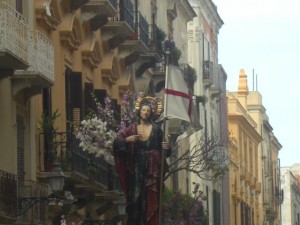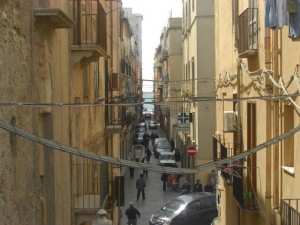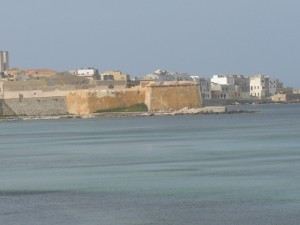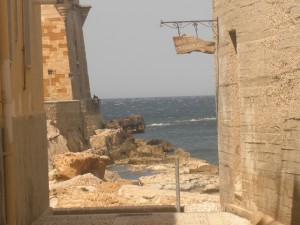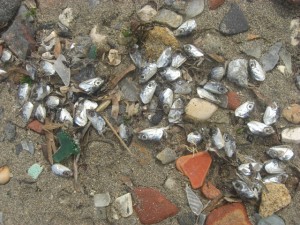There are plenty of shops along High Street in Lyme Regis on the Jurassic Coast. Most cater to the many tourists coming to this seaside town. At this time of year, in early October, it was mostly elderly people. The weather was brilliant, and we even got to sunbathe at the shore for half an hour before we left the next day.
We had the option of taking a three-hour tour, but having only one afternoon in this town (we got there around noon from Exeter), we decided to walk around at our own pace.
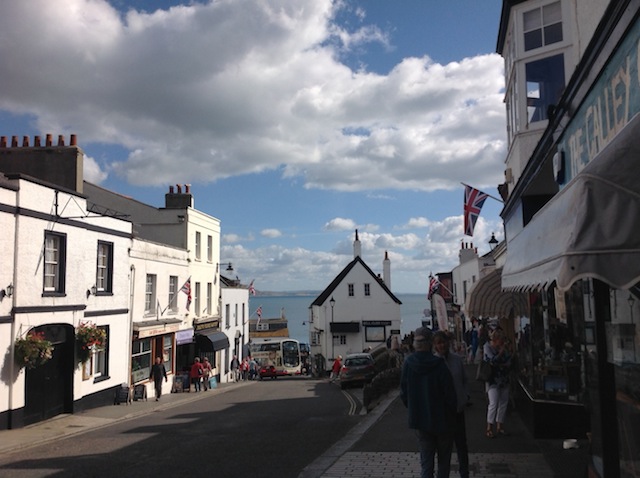
There are a few fossil shops, a fossil museum, fossil tours, and even the lanterns are fossil-shaped.
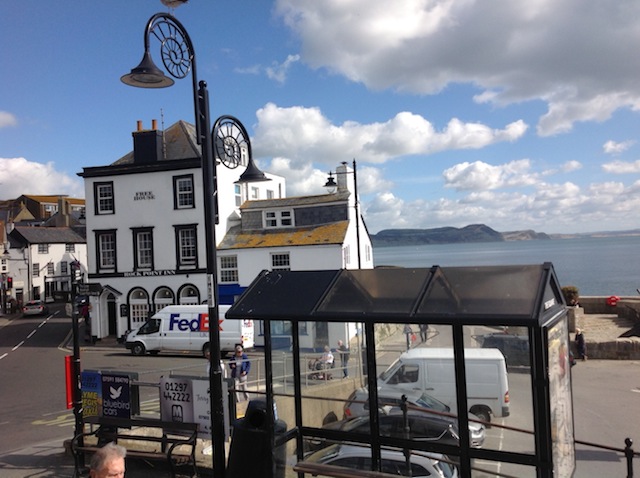
On my former visits England, I used to find coins on the streets and sidewalks. Not anymore. Either it is because the streets are being swept all the time (they looked very clean), or because Brexit is near. Instead of coins, I saw many bird feathers. 🙂
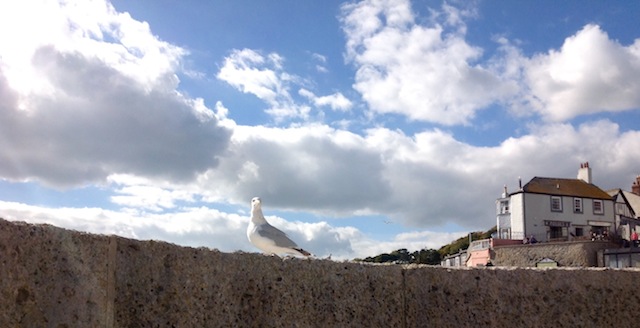
We walked a good mile out to the spot where one can find fossils. We didn’t find any, but instead I found much sea glass! A fossil collector explained how it got there – land erosion caused a landslide, and brought down a landfill… I brought it with me nevertheless. It had been in the sea for many years, polished by the sand and water, so it had done its job.
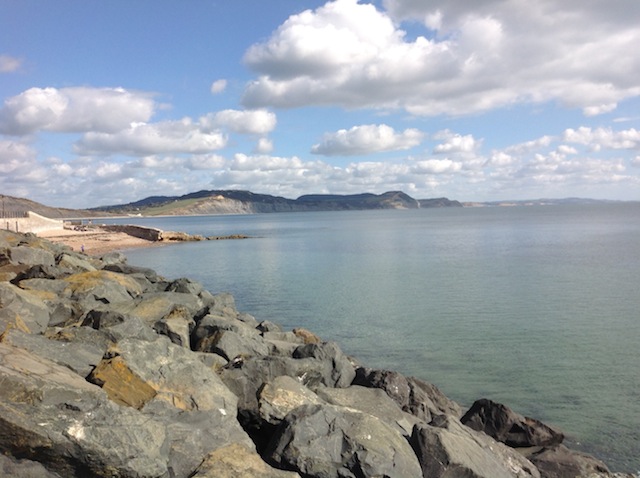
Jurassic Coast Lyme Regis
This is a beautiful place to vacation, and I could easily spend a week here. There are several cafés and benches by the shore. Most of them have an inscription dedicated to a loved one.
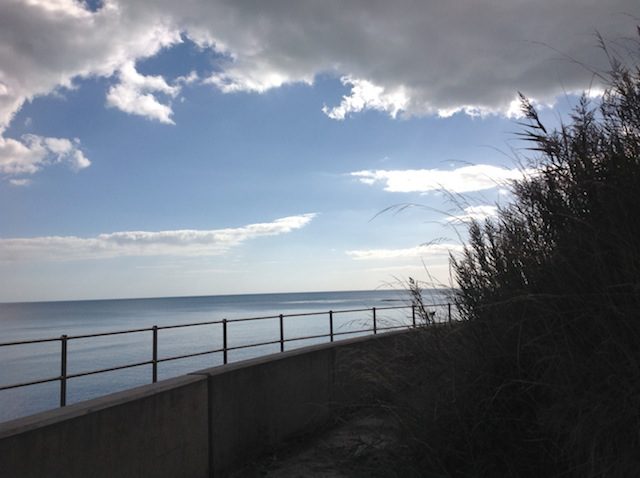
We watched the elderly get off the bus. They had to step carefully, some gave a helping hand. My husband and I looked at each other, and we didn’t have to say it out loud. This could be us ten years from now.
We saw no one with an iPhone, nor iPad (I used mine to take pictures and was eyed curiously). We were some of the younger tourists there.

